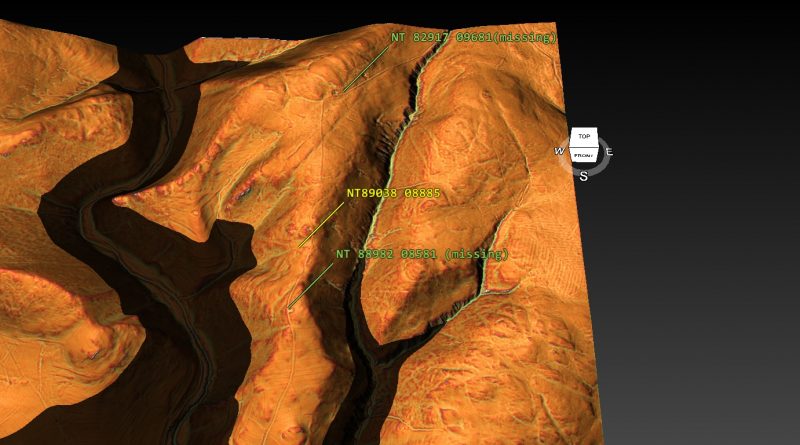
1017736 – Cross Dyke and two building foundations at Copper Snout
Scheduled Monument List Entry Ref: 1017736 – Grid Tile: NT80NE – Northumberland
GE Satellite Map
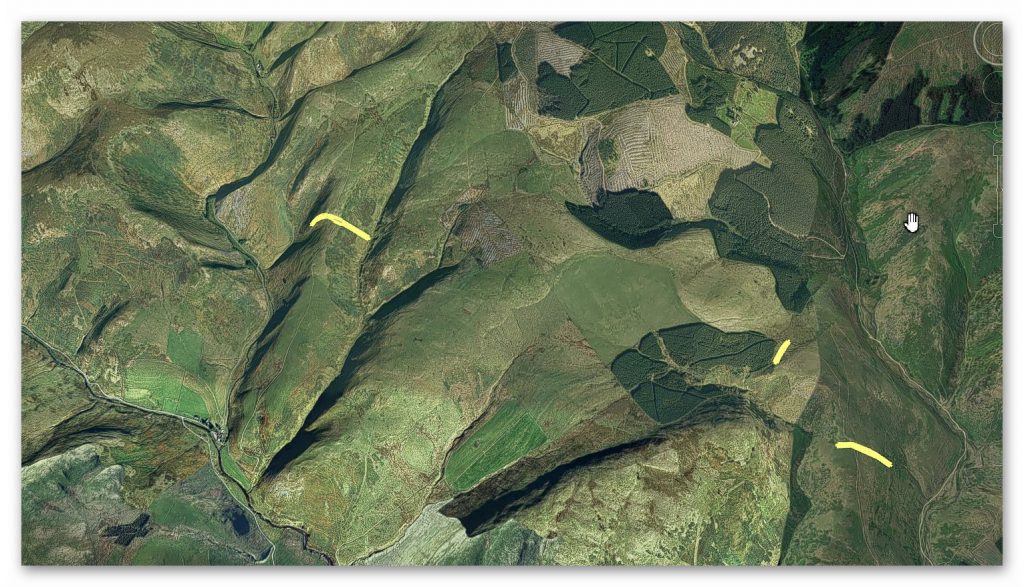
OS Map
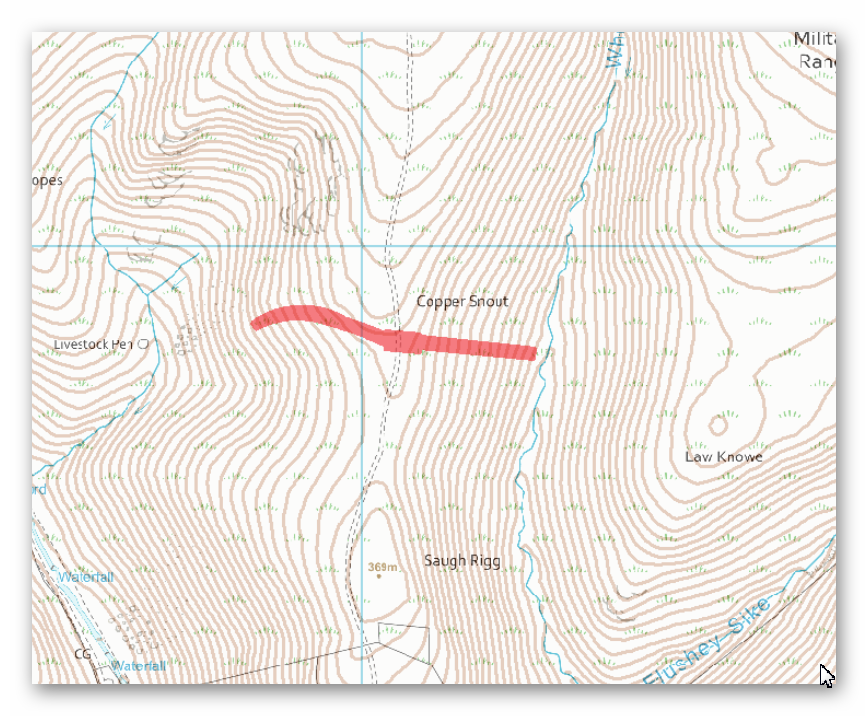
1800s Map
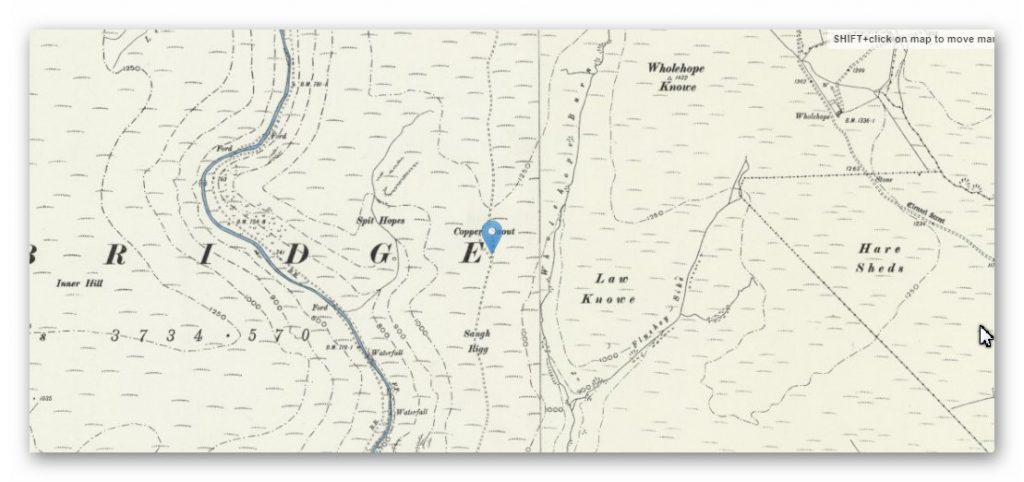
LiDAR Maps
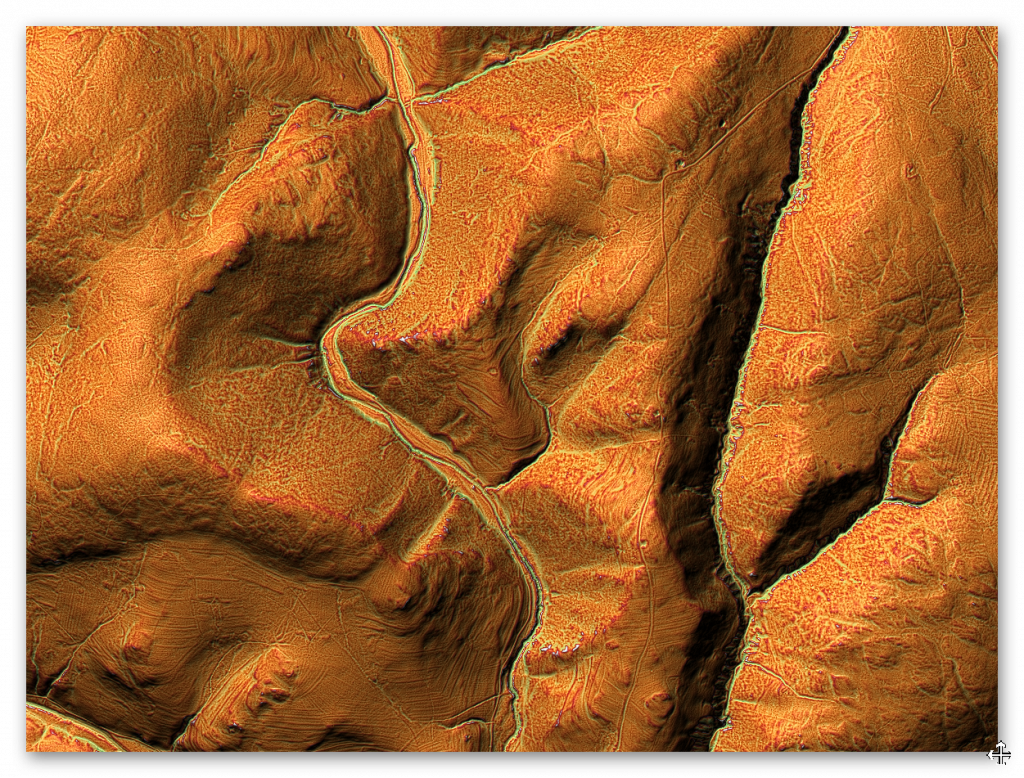
Prehistoric Water Levels
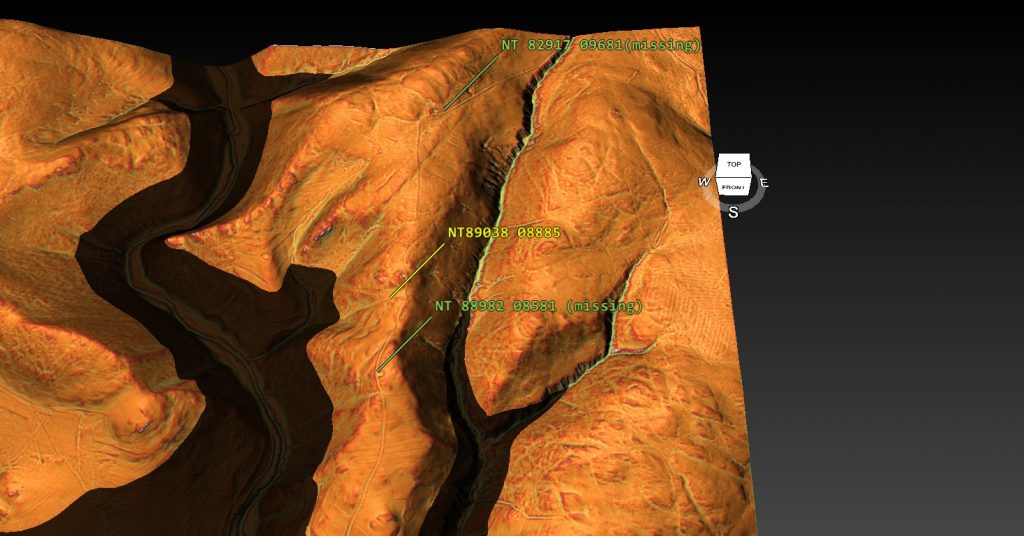
LiDAR Map in the Prehistoric
Dyke: NT 89038 08885
Length (m): 474
Orientation: E – W
Class Designation*:
Overall Width (m): 6
Ditch Width (m): 3
Bank Width (m): 3
Connectivity**: River
Ditch Shape: ?
Volume (cu.m): 1,849 (@ 1.3 depth)
Man hours to complete: 6,162
Estimated Construction Date: ?
Quarries*** (within 200 metres): 3
Springs****within 200 metres) 0
Dyke: NT 82917 09681 (missing)
Length (m): 487
Orientation: NE – SW
Class Designation*:
Overall Width (m): 12
Ditch Width (m): 5
Bank Width (m): 5
Connectivity**: River
Ditch Shape: ?
Volume (cu.m): 3,166 (@ 1.3 depth)
Man hours to complete: 10,552
Estimated Construction Date: ?
Quarries*** (within 200 metres): 2
Springs****within 200 metres) 0
Dyke: NT88982 08581 (missing)
Length (m): 1,332
Orientation: N – S
Class Designation*:
Overall Width (m): 8
Ditch Width (m): 4
Bank Width (m): 4
Connectivity**: River
Ditch Shape: ?
Volume (cu.m): 6,926 (@ 1.3 depth)
Man hours to complete: 23,088
Estimated Construction Date: ?
Quarries*** (within 200 metres): 1
Springs****within 200 metres) 0
Scheduled Monument Report:
The monument includes the remains of a cross dyke and two adjoining structures, situated astride the narrowest point of a high ridge between two streams. The cross dyke, which is oriented east to west, consists of an earthen bank 350m long and between 3m to 5m wide standing to a maximum height of 0.8m.
A ditch which runs parallel with the bank on its northern side is 2m to 3m wide and 0.2m deep. To the west of the track the cross dyke curves noticeably to the north west; it does not extend down to the foot of the steep slopes at either end, stopping abruptly immediately above the steepest part of the slope. At the top of the ridge there is an off-set entrance through the cross dyke, occupied by a trackway thought to be a branch of the medieval road known as Clennell Street. The remains of two rectangular enclosures, interpreted as the foundations of two buildings, are situated against the south side of the cross dyke, either side of the opening.
Both are oriented east to west and have doorways through their southern walls. The first and most westerly steading measures 12m by 4m while the second is 16m by 4.5m and is also subdivided into two rooms. The exact relationship between the two buildings and the cross dyke is uncertain but it is thought that they may have functioned as an integral part of the cross dyke system.
Investigations
Analysis shows that there maybe TWO Dykes missing from the Scheduled Monument report which are in the direction of old quarries – as it is called Copper Snout and we have two unidentified possible houses are we looking at an early prehistoric mine that continued to produce in later times and the Dyke across the ridge replaced with a road?
References:
https://historicengland.org.uk/listing/the-list/list-entry/ 1017736
https://prehistoric-britain.co.uk/dyke-construction-hydrology-101
Further Reading
For information about British Prehistory, visit www.prehistoric-britain.co.uk for the most extensive archaeology blogs and investigations collection, including modern LiDAR reports. This site also includes extracts and articles from the Robert John Langdon Trilogy about Britain in the Prehistoric period, including titles such as The Stonehenge Enigma, Dawn of the Lost Civilisation and the ultimate proof of Post Glacial Flooding and the landscape we see today. . (TSE DVD Introduction)
Robert John Langdon has also created a YouTube web channel with over 100 investigations and video documentaries to support his classic trilogy (Prehistoric Britain). He has also released a collection of strange coincidences that he calls ‘13 Things that Don’t Make Sense in History’ and his recent discovery of a lost Stone Avenue at Avebury in Wiltshire called ‘Silbury Avenue – the Lost Stone Avenue’. (TSE DVD Introduction)
Langdon has also produced a series of ‘shorts’, which are extracts from his main body of books:
For active discussions on the findings of the TRILOGY and recent LiDAR investigations that are published on our WEBSITE, you can join our and leave a message or join the debate on our Facebook Group.
For in-depth information about British Prehistory, we invite you to explore www.prehistoric-britain.co.uk, an extensive resource featuring archaeology blogs and investigations. This collection includes modern LiDAR reports that shed light on ancient landscapes. Additionally, you will find extracts and articles from the Robert John Langdon Trilogy, offering fascinating insights into Britain during the Prehistoric period. Some notable titles from the trilogy include “The Stonehenge Enigma,” “Dawn of the Lost Civilisation,” and groundbreaking evidence of Post Glacial Flooding and its impact on the landscape we see today.
Robert John Langdon has further enriched the exploration of Prehistoric Britain through his YouTube web channel, boasting over 100 investigations and video documentaries that complement his classic trilogy. In addition to his extensive work, Langdon has unveiled a compilation of intriguing coincidences titled “13 Things that Don’t Make Sense in History.” He has also brought to light his recent discovery of a forgotten Stone Avenue in Avebury, Wiltshire, aptly named ‘Silbury Avenue – the Lost Stone Avenue.’
For those who wish to actively engage in discussions about the findings from the TRILOGY and recent LiDAR investigations, we invite you to join our community. You can participate by leaving messages and joining debates on our dedicated Facebook Group. We encourage open dialogue and the exchange of ideas to foster a deeper understanding of Prehistoric Britain and its fascinating mysteries.
As you embark on your journey through British Prehistory, we hope these resources provide valuable insights and inspire further exploration of this captivating field of study.
NB. Recent investigations have indicated the location of hundreds of Quarries and pits built around Wansdyke and how the Dykes were used to transport the minerals transported in these Dykes – see the main site for details of blogs and books on this new discovery.
